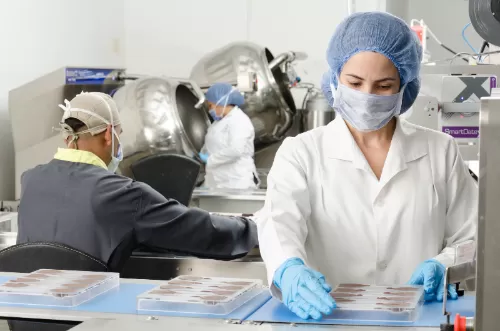Food Manufacturing Equipment: A Comprehensive Guide for 2025
In 2025, the food manufacturing equipment industry is undergoing significant transformations driven by technological advancements, evolving consumer preferences, and global sustainability goals. This guide delves into the latest trends, challenges, and opportunities in food manufacturing equipment, providing insights for manufacturers, suppliers, and stakeholders aiming to stay ahead in this dynamic sector.

The Evolving Landscape of Food Manufacturing
The food manufacturing sector is experiencing a shift towards automation, sustainability, and enhanced food safety. Manufacturers are investing in advanced technologies to improve efficiency, reduce environmental impact, and meet stringent regulatory standards.
Key Trends Shaping the Industry
Automation and Robotics
Automation is revolutionizing food manufacturing, with companies adopting robotics for tasks such as sorting, packaging, and quality control. This shift addresses labor shortages and enhances precision in operations.
Sustainability Initiatives
Sustainability is at the forefront, with manufacturers implementing eco-friendly practices like energy-efficient equipment, waste reduction, and sustainable sourcing to meet consumer demands and regulatory requirements.
Enhanced Food Safety Measures
Advancements in equipment design and monitoring systems are improving food safety. Manufacturers are investing in technologies that ensure compliance with safety standards and traceability throughout the supply chain.
Challenges Facing the Industry
Supply Chain Disruptions
Global events have highlighted vulnerabilities in supply chains. Manufacturers are seeking resilient equipment solutions and local suppliers to mitigate risks associated with international dependencies.
Regulatory Compliance
Navigating complex regulatory landscapes requires equipment that meets diverse standards. Manufacturers must ensure their machinery complies with food safety, environmental, and labor regulations.
Technological Integration
Integrating new technologies with existing systems poses challenges. Manufacturers need equipment that offers compatibility and scalability to adapt to evolving technological landscapes.
Opportunities for Growth
Investment in Research and Development
Continuous innovation in equipment design can lead to improved efficiency and product quality, providing a competitive edge in the market.
Expansion into Emerging Markets
Manufacturers can explore opportunities in emerging markets where demand for advanced food processing equipment is growing.
Collaboration with Technology Providers
Partnering with technology companies can facilitate the integration of cutting-edge solutions, enhancing operational capabilities and product offerings.
Conclusion
The food manufacturing industry in 2025 is characterized by rapid technological advancements, a strong emphasis on sustainability, and a commitment to food safety. Manufacturers and suppliers must navigate challenges and leverage opportunities to thrive in this evolving landscape. By investing in innovative equipment and embracing change, stakeholders can ensure continued growth and success in the food manufacturing sector.

